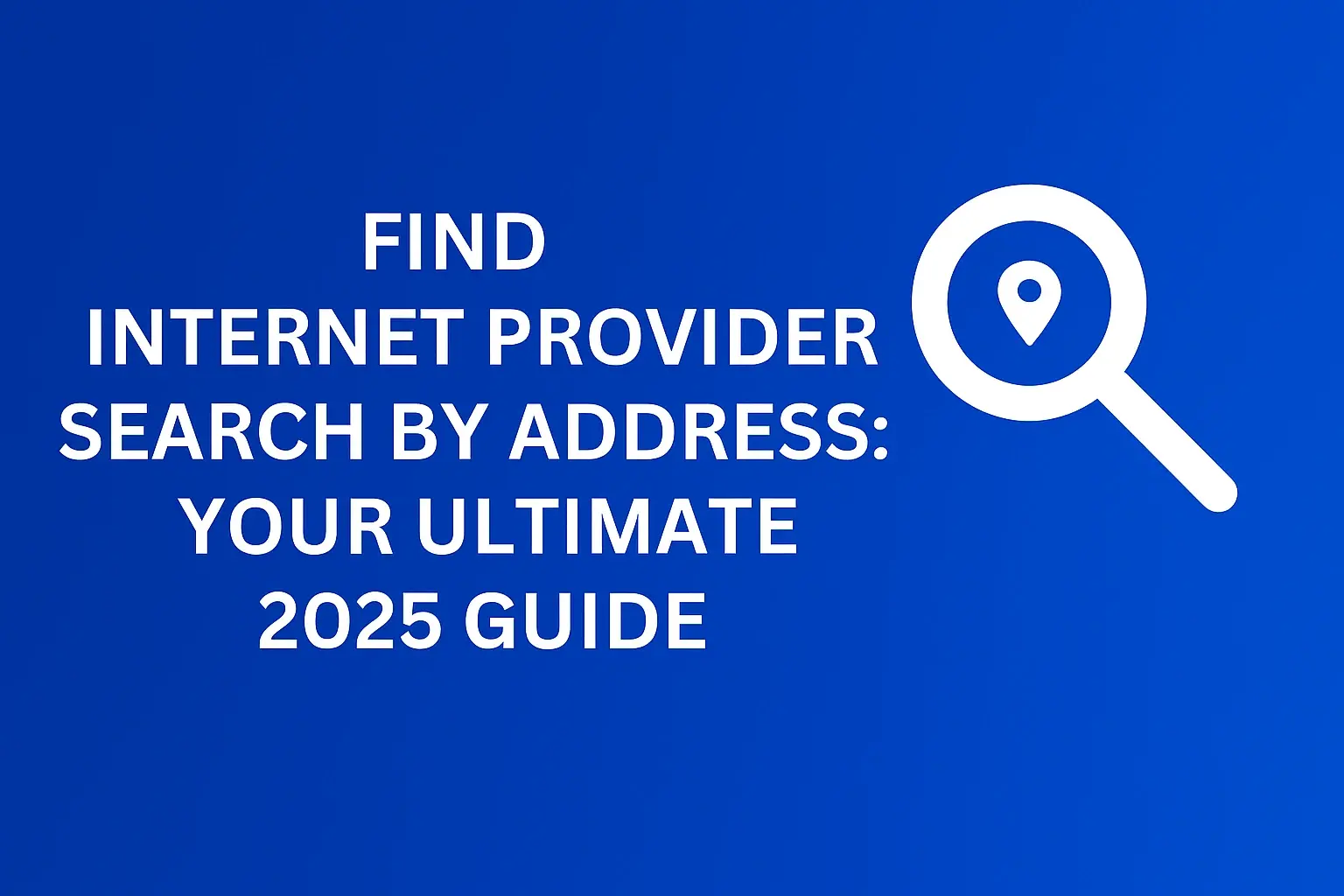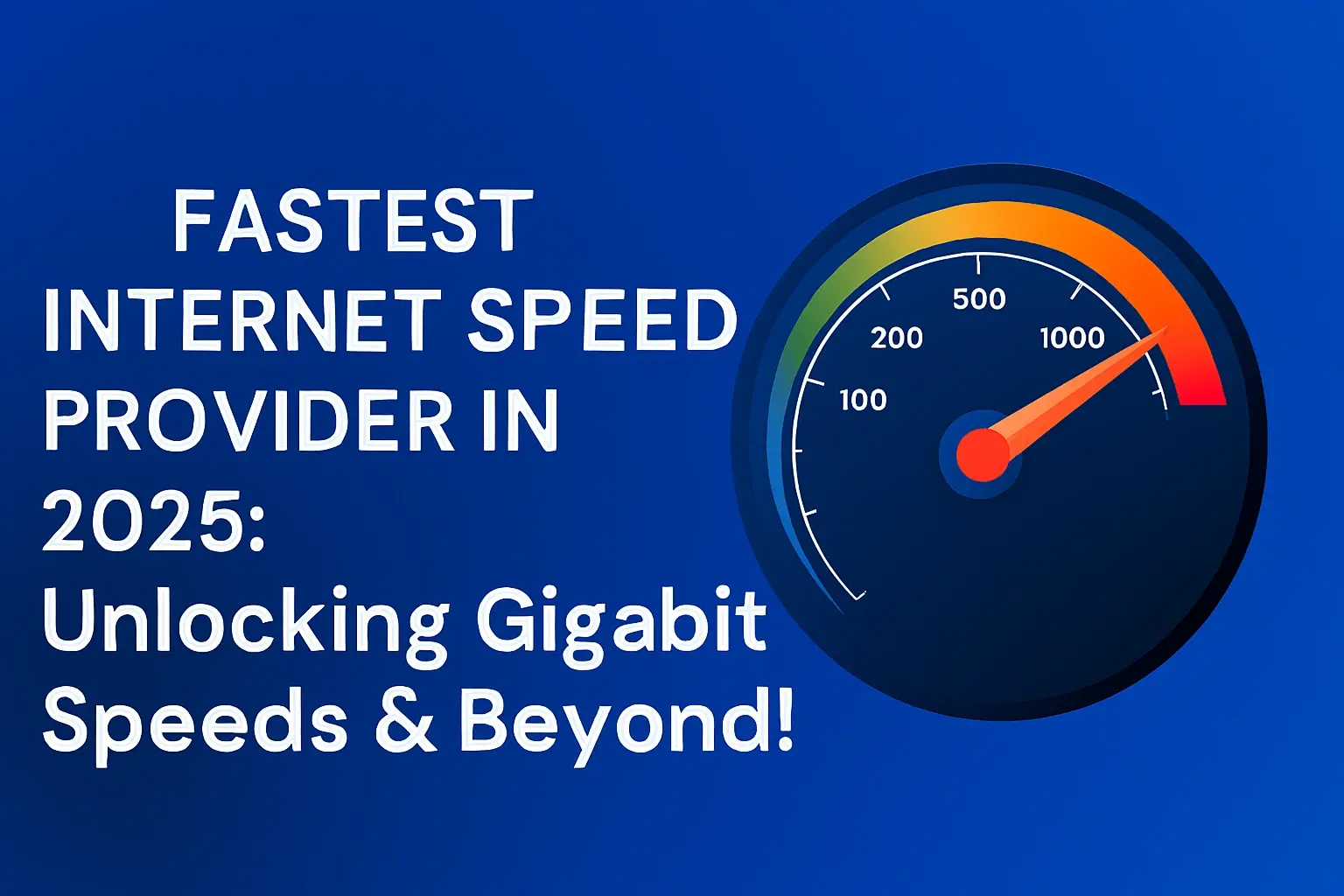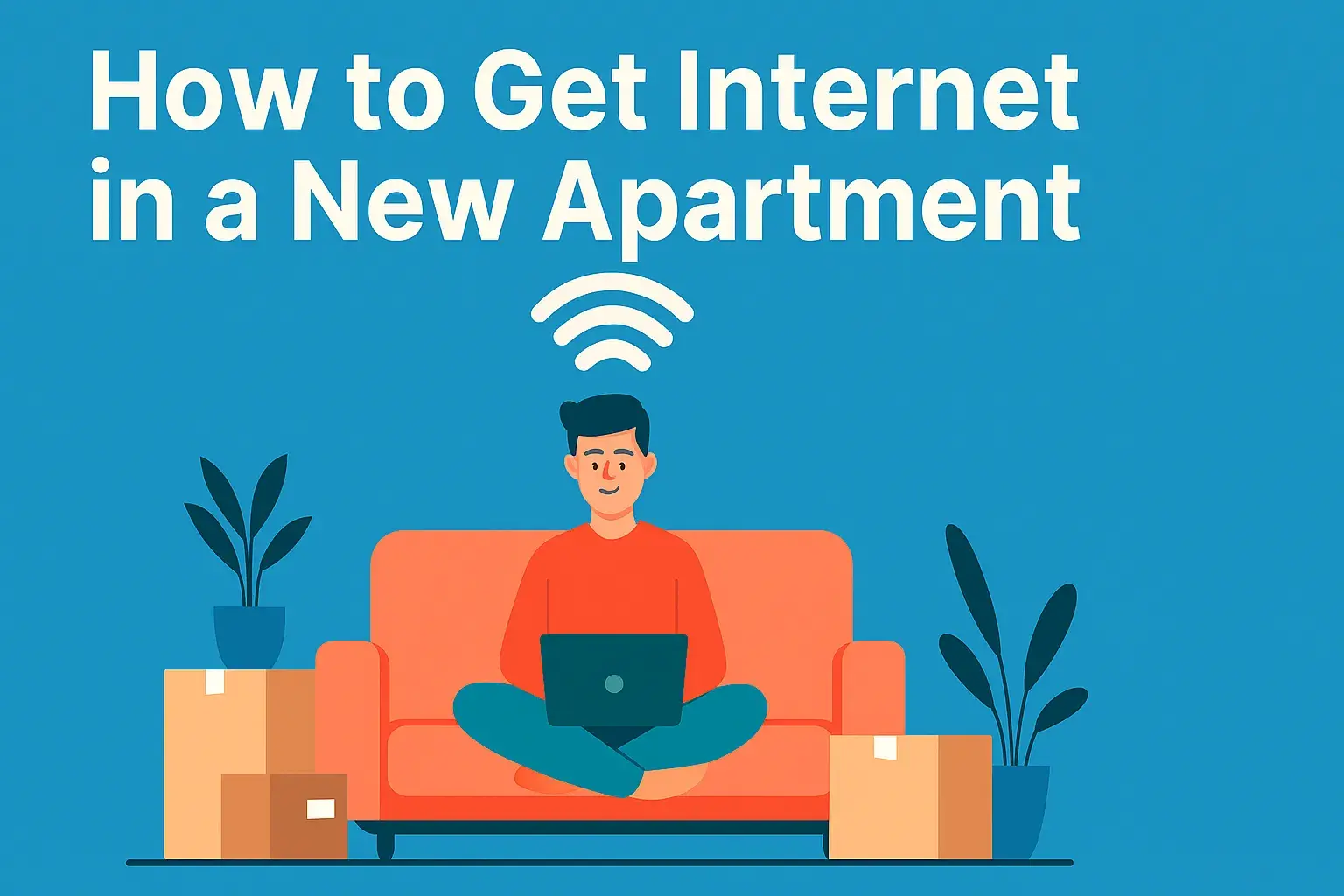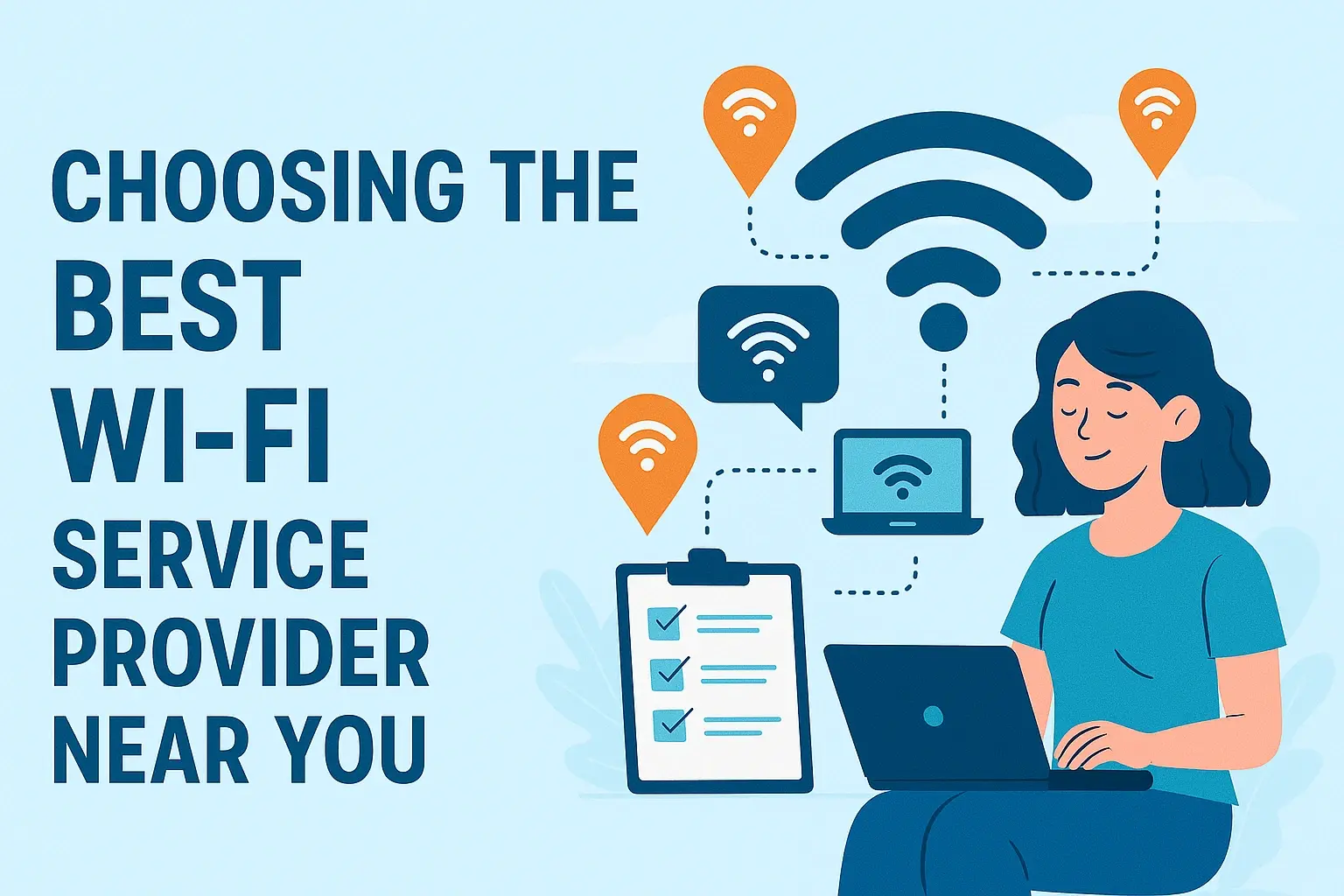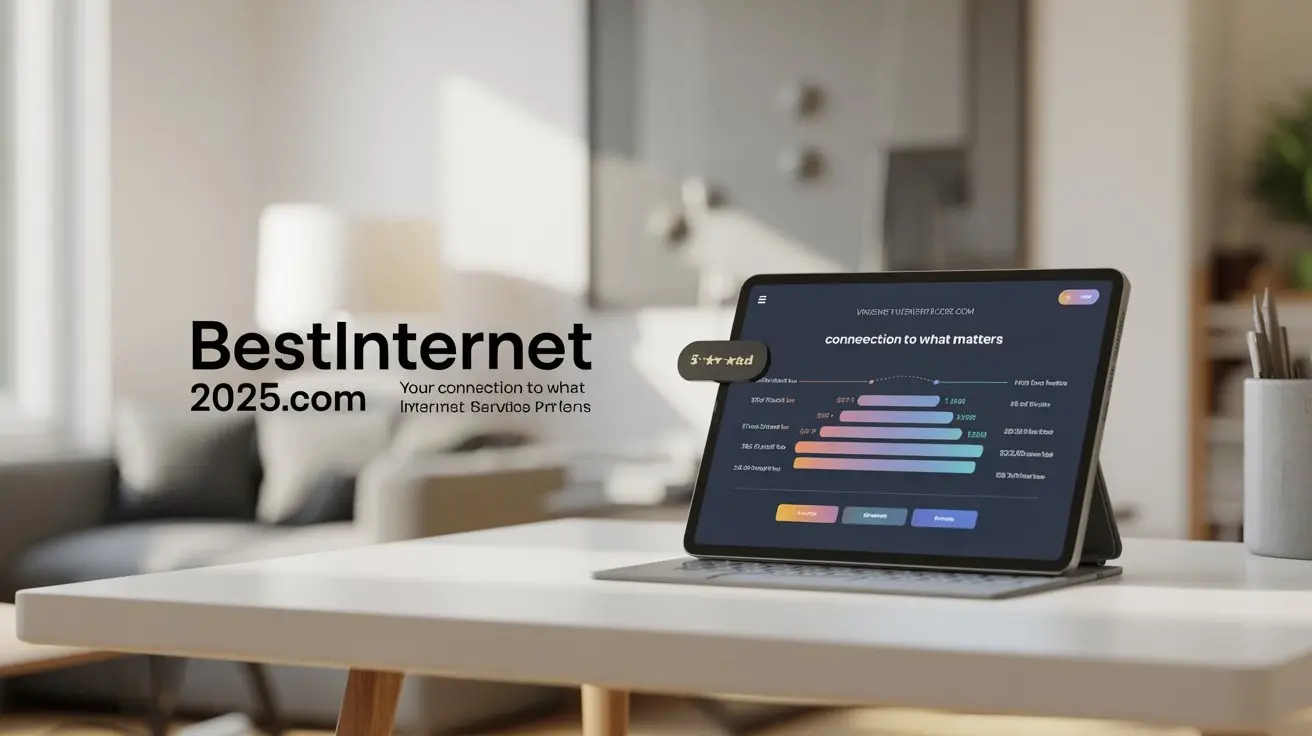What Type of Internet Connection is Typically the Cheapest?

Discover which internet connection type offers the most budget-friendly solution for your needs. This guide dives deep into the cost-effectiveness of various internet options, helping you make an informed decision without overspending.
Understanding the Factors Influencing Internet Costs
When we talk about the "cheapest" internet connection, it's crucial to understand that cost isn't a static number. Several variables come into play, and they can significantly impact the monthly bill you receive. Ignoring these factors can lead to unexpected expenses or choosing a service that, while seemingly cheap upfront, becomes more costly in the long run due to limitations or hidden fees. For 2025, these factors remain largely consistent, but the competitive landscape is always evolving, potentially shifting the balance of affordability.
Speed and Bandwidth
The most obvious cost driver is the speed of your internet connection. Higher download and upload speeds, measured in megabits per second (Mbps), generally command higher prices. This is because delivering faster speeds requires more robust infrastructure and technology. If your primary use is basic web browsing and email, you won't need the same speed as someone who frequently streams 4K video, plays online games, or works from home with large file transfers. Understanding your actual usage needs is the first step in identifying a cost-effective plan. Many providers offer tiered plans, and selecting the lowest tier that meets your needs is key to minimizing costs. For instance, a plan offering 50 Mbps might be perfectly adequate for a single user with moderate internet habits, whereas a household with multiple users and heavy streaming needs might require 200 Mbps or more, which will naturally be more expensive.
Data Caps and Overage Charges
Another significant factor influencing cost is data usage. Some internet plans come with a monthly data cap, a limit on how much data you can download or upload. Exceeding this cap can result in hefty overage charges, which can quickly make a seemingly cheap plan very expensive. For 2025, many providers are moving towards unlimited data plans, especially for higher-tier services, but it's essential to verify this. If a plan has a data cap, carefully estimate your monthly usage. Services like internet usage calculators can help you with this estimation. For users who consume a lot of data, an unlimited plan, even if slightly more expensive per month, will likely be cheaper than a capped plan with potential overages.
Contract Length and Promotions
Internet providers often use contracts and promotional pricing to attract and retain customers. A contract, typically lasting 12 or 24 months, can lock in a lower introductory price. However, be aware of what the price will be after the promotional period ends. Many users find themselves paying significantly more once the initial contract term is up. Always ask about the standard rate after the promotion. Furthermore, some providers offer discounts for bundling services, such as internet with TV or phone. While this might seem like a good deal, it's important to compare the bundled price to the cost of individual services from different providers to ensure you're truly saving money.
Equipment Rental Fees
Most internet providers require you to use their modem and router, or a combination unit called a gateway. These devices are often rented for a monthly fee, which can add $10-$20 or more to your bill. While convenient, these fees accumulate over time. In many cases, you can purchase your own compatible modem and router, which can save you money in the long run. Before buying, ensure the equipment is on your provider's approved list and check the compatibility specifications. This is a common area where users can trim monthly expenses without sacrificing service quality.
Installation and Activation Fees
Be prepared for potential one-time fees for installation and activation. These charges can range from $50 to $100 or even more, depending on the provider and the complexity of the installation. Some providers offer free installation as a promotional deal, so it's worth inquiring about these offers. If professional installation isn't strictly necessary, some providers offer self-installation kits, which can reduce or eliminate these upfront costs.
Bundling and Discounts
As mentioned, bundling multiple services can sometimes lead to discounts. This could include internet, cable TV, and home phone. However, it's crucial to do the math. Sometimes, the discount isn't substantial, or you might be paying for services you don't truly need. For the cheapest internet, it's often best to evaluate internet-only plans first and then consider bundles if they genuinely offer savings for your specific needs.
Dial-Up: The Original Cheap Option
In the early days of the internet, dial-up was the primary way most people connected. It utilized existing telephone lines to establish an internet connection. While it's largely obsolete today due to its incredibly slow speeds and the fact that it ties up your phone line, it historically represented the cheapest entry point into the online world. For very basic tasks like sending emails or accessing simple text-based websites, it was functional, albeit frustratingly slow. Today, finding a provider offering dial-up is extremely rare, and even if available, the cost savings are negligible compared to modern, significantly faster, and more feature-rich options. The speeds were typically in the range of 56 kilobits per second (Kbps), which is about 100 times slower than typical broadband connections available in 2025. The primary advantage was its accessibility, as most households already had a phone line. However, the inability to use the phone and the glacial pace made it unsustainable for most users as internet content became more complex.
DSL: A Budget-Friendly Upgrade
Digital Subscriber Line (DSL) technology uses existing copper telephone lines to provide internet access. It was a significant upgrade from dial-up because it allowed for simultaneous use of the phone line and offered much faster speeds. For many years, DSL was the go-to for budget-conscious consumers looking for a reliable internet connection without the premium cost of early cable or fiber options. In 2025, DSL is still available in many areas, particularly in more rural or less densely populated regions where newer infrastructure hasn't been deployed. It often offers a good balance between cost and performance for basic to moderate internet usage.
How DSL Works
DSL modems connect to a phone jack in your home. Unlike dial-up, DSL uses a higher frequency range on the phone line, allowing for simultaneous voice and data transmission. This means you can be online and talk on the phone at the same time. The speed of DSL is highly dependent on the distance between your home and the telephone company's central office (CO). The further away you are, the slower the speeds will be. This is a critical limitation of DSL technology.
Typical Speeds and Costs (2025)
In 2025, DSL plans typically offer download speeds ranging from 5 Mbps to 100 Mbps, with upload speeds being significantly lower (often 1 Mbps to 10 Mbps). Entry-level DSL plans can be found for as low as $30-$50 per month, making them one of the cheapest broadband options available. For example, a 25 Mbps download/3 Mbps upload plan might cost around $40 per month. These plans are generally suitable for single users or small households that primarily use the internet for web browsing, email, social media, and occasional video streaming. However, for households with multiple users, extensive streaming, online gaming, or large file downloads, these speeds might prove insufficient and lead to a frustrating experience.
Pros of DSL
- Affordability: Often one of the cheapest broadband options, especially for basic speed tiers.
- Availability: Still widely available in many areas due to existing telephone infrastructure.
- Simultaneous Phone Use: Allows you to use your phone and internet at the same time.
- No Data Caps (Often): Many DSL providers offer unlimited data plans, though this should always be verified.
Cons of DSL
- Speed Limitations: Speeds are generally lower than cable or fiber, especially upload speeds.
- Distance Dependency: Performance degrades significantly the further you are from the central office.
- Shared Bandwidth (Less Common Now): In some older networks, DSL could be affected by neighborhood usage, though this is less prevalent with modern implementations.
For users prioritizing cost savings and with moderate internet needs, DSL remains a viable and often the cheapest broadband solution. It's a solid step up from dial-up and sufficient for many households. However, it's essential to check the actual speeds available at your specific address, as performance can vary greatly.
Cable Internet: Balancing Cost and Speed
Cable internet uses the same coaxial cable network that delivers cable television to your home. It has become a dominant force in the broadband market due to its generally higher speeds and wider availability compared to DSL in many urban and suburban areas. While not always the absolute cheapest option, cable internet often provides a compelling balance between cost, speed, and reliability, making it a popular choice for many households. For 2025, cable providers continue to invest in their networks, offering increasingly competitive speeds and pricing.
How Cable Internet Works
Cable internet transmits data over coaxial cables. Unlike DSL, cable internet typically offers higher download speeds than upload speeds. This is because the technology is designed for a "downstream" flow of data, which is what most consumers primarily use for browsing, streaming, and downloading. The bandwidth on a cable network is shared among users in a neighborhood. This means that during peak usage times (evenings and weekends), speeds can sometimes slow down as more people in the area are online. However, advancements in cable technology have significantly mitigated this issue in many areas.
Typical Speeds and Costs (2025)
In 2025, cable internet plans commonly offer download speeds ranging from 100 Mbps to over 1 Gbps (1000 Mbps). Upload speeds typically range from 10 Mbps to 50 Mbps, though some providers are starting to offer symmetrical or near-symmetrical speeds. Entry-level cable plans might start around $50-$70 per month for speeds around 100-200 Mbps. Mid-tier plans offering 300-500 Mbps could cost $60-$90 per month. While these prices are generally higher than the cheapest DSL plans, the significant increase in speed often justifies the cost for many users. For example, a 300 Mbps plan for $70/month is a considerable upgrade from a 50 Mbps DSL plan for $50/month, especially for households with multiple users or heavy internet demands.
Pros of Cable Internet
- Higher Speeds: Generally offers much faster download speeds than DSL, suitable for streaming, gaming, and large downloads.
- Widespread Availability: Available in most urban and suburban areas.
- Symmetrical Speeds (Emerging): Some providers are starting to offer plans with closer upload and download speeds.
- Reliability: Generally reliable, though can be affected by neighborhood congestion during peak hours.
Cons of Cable Internet
- Cost: Can be more expensive than DSL, especially for higher speed tiers.
- Upload Speeds: Traditionally lower upload speeds compared to download speeds.
- Shared Bandwidth: Performance can fluctuate based on neighborhood usage.
- Data Caps: Some cable providers still impose data caps, although unlimited options are becoming more common.
Cable internet is a strong contender for users who need more speed than DSL can offer but find fiber optic too expensive or unavailable. It represents a good middle ground, providing a robust connection for most modern internet activities. When looking for the cheapest cable option, compare plans carefully, paying attention to advertised speeds, data caps, and any promotional pricing that might increase later.
Satellite Internet: Coverage vs. Cost
Satellite internet is an option for individuals living in remote or rural areas where traditional wired broadband (DSL, cable, fiber) is unavailable. It works by transmitting data between a satellite dish installed at your home and a satellite orbiting Earth, which then communicates with a ground station. While it provides internet access where little else exists, it typically comes with significant drawbacks in terms of cost, speed, and latency.
How Satellite Internet Works
A satellite dish on your property communicates with a geostationary satellite. This satellite relays the signal to a ground station, which is connected to the internet backbone. The data then travels back through the satellite to your dish. This multi-step process is what leads to higher latency (delay) and can impact real-time applications like online gaming or video conferencing.
Typical Speeds and Costs (2025)
In 2025, satellite internet speeds have improved, with download speeds often ranging from 25 Mbps to 100 Mbps. However, upload speeds are typically very low, often around 3 Mbps. The cost of satellite internet is often higher than comparable speeds offered by terrestrial services. Plans can range from $60-$100 per month, and this often includes data caps that are significantly lower than other services, sometimes as low as 10-50 GB per month. Exceeding these caps can lead to severely throttled speeds or expensive overage charges. New satellite constellations, like Starlink, are offering lower latency and higher speeds, but their pricing can also be higher, with upfront equipment costs sometimes exceeding $500.
Pros of Satellite Internet
- Widespread Availability: The primary advantage is its availability in almost any location, regardless of infrastructure.
- Improved Latency (Newer Systems): Newer low-earth orbit (LEO) satellite systems are reducing latency.
- Dedicated Connection: Your connection isn't shared with neighbors in the same way as cable.
Cons of Satellite Internet
- High Latency: Traditional geostationary satellite internet has high latency, making real-time applications difficult.
- Data Caps: Most plans come with strict data caps, leading to potential throttling or overages.
- Cost: Generally more expensive per Mbps than other broadband types.
- Weather Dependency: Heavy rain, snow, or storms can disrupt the signal.
- Equipment Costs: Upfront costs for satellite dishes can be substantial.
For most users, satellite internet is not the cheapest option due to its high monthly costs, data limitations, and performance issues. However, for those in extremely remote areas with no other broadband alternatives, it may be the only option, and thus the "cheapest" in terms of accessibility. Always research specific providers and plans, as newer LEO satellite services are changing the landscape, but often at a higher price point.
Fixed Wireless: A Growing Contender
Fixed wireless internet provides broadband access wirelessly, typically using radio signals transmitted from a tower to an antenna installed at your home or business. It's often deployed in areas where laying cable is cost-prohibitive, making it a strong competitor to satellite for rural and underserved populations. In 2025, fixed wireless technology is becoming increasingly sophisticated and offers a compelling alternative for many.
How Fixed Wireless Works
A fixed wireless provider installs a small antenna on your roof or side of your building. This antenna communicates wirelessly with a nearby base station or tower. The signal travels from the tower to your antenna, and then through a cable to your router. The range and speed depend on the specific technology used (e.g., WiMAX, LTE, 5G fixed wireless) and the distance to the tower. Line-of-sight between your antenna and the tower is usually required for optimal performance.
Typical Speeds and Costs (2025)
Fixed wireless speeds can vary widely, but modern implementations can offer download speeds from 25 Mbps up to 1 Gbps, with upload speeds often being better than DSL but not as high as fiber. Monthly costs can be competitive, often falling in the range of $50-$80 for plans offering 50-100 Mbps. Some 5G fixed wireless plans are even starting to rival cable speeds at similar price points. Data caps can be a factor, but many providers offer unlimited or very high data allowances. For example, a 100 Mbps fixed wireless plan with unlimited data might cost $70 per month, making it a strong contender against cable internet in terms of value.
Pros of Fixed Wireless
- Good Speeds: Can offer speeds comparable to cable, especially with newer 5G technology.
- Lower Latency than Satellite: Significantly lower latency than traditional satellite internet.
- Cost-Effective: Often more affordable than other high-speed options in areas where it's available.
- Faster Deployment: Can be deployed more quickly than wired infrastructure.
Cons of Fixed Wireless
- Line-of-Sight Requirement: Performance can be affected by obstructions like trees or buildings.
- Range Limitations: Performance can degrade with distance from the tower.
- Availability: Not as widely available as DSL or cable, though expanding rapidly.
- Data Caps: Some plans may still have data caps.
Fixed wireless is an excellent option for those in areas where it's available and offers a cost-effective way to get high-speed internet without the limitations of satellite or the potential congestion of cable. It's a technology to watch as it continues to grow and improve.
Fiber Optic: The Premium, but Potentially Cost-Effective Choice
Fiber optic internet uses strands of glass or plastic to transmit data as pulses of light. It is generally considered the gold standard for internet connectivity, offering the fastest speeds, lowest latency, and highest reliability. While often perceived as the most expensive option, it's important to consider the long-term value and compare it to other services, especially as prices become more competitive and availability expands in 2025.
How Fiber Optic Works
Fiber optic cables consist of thin strands of glass that carry data using light signals. This method of transmission is incredibly efficient and allows for extremely high bandwidth. Because light travels incredibly fast and with minimal signal degradation over distance, fiber offers near-instantaneous data transfer and very low latency. Unlike cable, fiber bandwidth is not typically shared among neighbors in the same way, leading to more consistent speeds.
Typical Speeds and Costs (2025)
In 2025, fiber optic plans commonly offer symmetrical speeds, meaning download and upload speeds are the same. Speeds can range from 100 Mbps to 10 Gbps (10,000 Mbps). Entry-level fiber plans (e.g., 100 Mbps symmetrical) might start around $60-$80 per month. Mid-tier plans offering 500 Mbps to 1 Gbps symmetrical speeds can range from $70-$100 per month. While these initial costs can be higher than the cheapest DSL or cable plans, the superior performance and symmetrical speeds can make them more cost-effective for users with demanding needs. For instance, a 1 Gbps fiber plan at $80/month offers vastly superior performance for uploads (crucial for video conferencing, cloud backups, and content creation) compared to a 500 Mbps cable plan at $70/month with only 20 Mbps upload. Many fiber providers also offer unlimited data with no caps.
Pros of Fiber Optic
- Unmatched Speeds: The fastest internet technology available, with very high download and upload speeds.
- Low Latency: Ideal for online gaming, video conferencing, and real-time applications.
- Symmetrical Speeds: Equal download and upload speeds are standard.
- Reliability: Less susceptible to interference and environmental factors than other technologies.
- Unlimited Data: Most fiber plans come with unlimited data.
Cons of Fiber Optic
- Availability: Still not available in all areas, particularly rural or less developed regions.
- Cost: Can have higher upfront costs and monthly rates than basic DSL or cable plans.
- Installation Complexity: Installation can sometimes be more involved, though often included in the initial setup.
While fiber optic might not be the absolute cheapest in terms of monthly price for the lowest speed tier, its unparalleled performance and symmetrical speeds make it incredibly cost-effective for power users, remote workers, and households with multiple devices and heavy internet usage. If available, it's worth comparing fiber plans to high-speed cable plans to see which offers the best value for your specific needs.
Mobile Hotspots and 5G Home Internet
Mobile hotspots and 5G home internet represent a newer category of internet access, leveraging cellular networks. While mobile hotspots are primarily for on-the-go use, 5G home internet is emerging as a viable alternative to traditional wired broadband for some households.
Mobile Hotspots
A mobile hotspot uses a smartphone or a dedicated device to create a Wi-Fi network that other devices can connect to. This is ideal for temporary internet access or when traveling. However, relying on a mobile hotspot as your primary home internet can be expensive and impractical due to data limits and potential throttling. Most mobile plans have data caps, and exceeding them can lead to very high costs or significantly reduced speeds. For 2025, while convenient for mobility, it's rarely the cheapest or most practical solution for consistent home internet.
5G Home Internet
5G home internet is a service offered by mobile carriers that uses their 5G cellular network to provide broadband to your home. A receiver or gateway is installed, similar to fixed wireless. Speeds can be very competitive, often rivaling cable and even fiber in some areas, with lower latency than older cellular technologies. The cost for 5G home internet plans in 2025 typically ranges from $50-$70 per month, often with unlimited data. This makes it a very attractive and potentially cheap option, especially if it offers speeds comparable to more expensive cable or fiber plans in your area.
Pros of 5G Home Internet
- Competitive Speeds: Can offer speeds comparable to cable and fiber.
- Potentially Lower Cost: Often priced competitively with unlimited data.
- Easy Setup: Typically involves a simple gateway installation.
- No Long-Term Contracts (Often): Many providers offer month-to-month plans.
Cons of 5G Home Internet
- Availability: Dependent on 5G network coverage, which is still expanding.
- Performance Variability: Speeds can fluctuate based on network congestion and signal strength.
- Latency: While improved, latency can still be higher than fiber.
- Data Caps (Less Common): While often unlimited, some plans might have soft caps.
5G home internet is a rapidly evolving technology that is becoming a serious contender for the cheapest high-speed internet, especially in areas where fiber is not yet available. Its combination of speed, price, and unlimited data makes it a compelling choice for many households.
Comparing the Cheapest Options Head-to-Head
To truly determine the cheapest internet connection, we need to compare the most budget-friendly options side-by-side, considering not just the monthly price but also the value and limitations. For 2025, the primary contenders for the "cheapest" title are typically DSL, entry-level cable, and potentially 5G home internet or fixed wireless in specific areas.
Here's a simplified comparison table:
| Internet Type | Typical Monthly Cost (2025) | Typical Download Speed | Typical Upload Speed | Data Caps | Best For |
|---|---|---|---|---|---|
| DSL (Basic) | $30 - $50 | 10 - 50 Mbps | 1 - 5 Mbps | Often Unlimited | Basic browsing, email, single user. |
| Cable (Entry-Level) | $50 - $70 | 100 - 200 Mbps | 10 - 20 Mbps | Varies (check provider) | Small to medium households, streaming. |
| 5G Home Internet | $50 - $70 | 50 - 300 Mbps (variable) | 10 - 50 Mbps (variable) | Often Unlimited | Households seeking good value and speed. |
| Fixed Wireless | $50 - $80 | 50 - 100 Mbps | 10 - 25 Mbps | Varies (often unlimited) | Rural/underserved areas, good value. |
| Satellite (Traditional) | $60 - $100+ | 25 - 100 Mbps | 1 - 3 Mbps | Strict (10-50 GB) | Extremely remote areas only. |
From this table, it's clear that basic DSL often presents the lowest monthly price for a broadband connection. However, its speed limitations make it unsuitable for many modern internet users. Entry-level cable and 5G home internet offer a significant jump in speed for a moderate increase in cost, often providing better overall value. Fixed wireless is a strong contender in specific geographic areas, offering a good balance of speed and price.
Satellite internet, while offering coverage, is generally not the cheapest option when considering performance and data limits, unless it's the absolute only option available.
Strategies for Finding the Cheapest Internet
Finding the cheapest internet connection requires a proactive approach. It's not just about picking the lowest advertised price; it's about understanding your needs and leveraging available strategies to secure the best deal. Here are some effective methods for 2025:
1. Assess Your Actual Needs
Before you start looking, honestly evaluate how you use the internet. Do you stream 4K movies daily? Do you have multiple people in your household online simultaneously? Or do you primarily browse websites, send emails, and occasionally watch videos? Understanding your usage will prevent you from overpaying for speed you don't need or being frustrated by a plan that's too slow.
- Basic Use: Web browsing, email, social media, occasional low-res video. (5-50 Mbps)
- Moderate Use: Streaming HD video, online gaming, multiple users. (50-200 Mbps)
- Heavy Use: 4K streaming, large file downloads/uploads, extensive remote work, many connected devices. (200+ Mbps, ideally fiber)
2. Compare Providers in Your Area
Internet availability varies greatly by location. Use online comparison tools and enter your address to see which providers and plans are available to you. Don't assume you know who offers the best deals; new providers and plans emerge regularly.
3. Look for Promotions and Introductory Offers
Most providers offer special deals for new customers. These can include discounted monthly rates for the first 6-12 months, waived installation fees, or free equipment rentals. Be sure to ask about these when you call or research online. However, always find out what the price will be after the promotional period ends.
4. Negotiate with Providers
Don't be afraid to negotiate. If you have competing offers, mention them to a provider's sales representative. Sometimes, they can match or beat a competitor's price to win your business. You can also try negotiating when your promotional period is ending and you're facing a price increase. Ask if there are any new promotions or loyalty discounts available.
5. Consider Bundling Wisely
If you need other services like TV or phone, bundling them with your internet can sometimes lead to savings. However, carefully calculate the total cost. Sometimes, purchasing services separately from different providers can be cheaper. Only bundle if the combined package offers a genuine discount for services you will actually use.
6. Buy Your Own Modem and Router
As mentioned earlier, rental fees for modems and routers can add up. If you can afford the upfront cost of purchasing your own compatible equipment, you can save $10-$20 per month. Ensure the equipment is on your provider's approved list and meets their specifications.
7. Check for Government Assistance Programs
In many countries, there are government programs designed to help low-income households afford internet service. For example, in the United States, the Affordable Connectivity Program (ACP) provides a discount on internet service for eligible households. Research programs available in your region.
8. Read the Fine Print
Always read the terms and conditions carefully. Pay attention to data caps, overage fees, contract lengths, early termination fees, and any hidden charges. Understanding these details can prevent unexpected costs and ensure you're getting the best value.
9. Consider Older Technologies if Sufficient
If your internet needs are very basic and you live in an area with limited options, a lower-tier DSL plan might be the cheapest viable option. While not ideal for everyone, it can be a functional and budget-friendly solution for essential online tasks.
Conclusion: Making the Smartest Choice
When seeking the cheapest internet connection in 2025, the answer isn't a single technology but rather a careful assessment of your specific needs, location, and the available market. While basic DSL often boasts the lowest monthly price tag, its limited speeds render it unsuitable for many modern users. For those requiring more performance without breaking the bank, entry-level cable internet, 5G home internet, and fixed wireless in eligible areas emerge as strong contenders, offering a better balance of speed and affordability.
Satellite internet, while providing coverage in remote locations, remains a costly option with significant performance limitations, making it a last resort rather than a budget-friendly choice. Fiber optic, though typically more expensive for its entry-level tiers, offers unparalleled value for power users due to its superior speeds, reliability, and symmetrical bandwidth, often making it the most cost-effective long-term solution for heavy internet consumption.
To secure the cheapest internet, actively compare providers in your area, leverage introductory offers, negotiate prices, and consider purchasing your own equipment. Always scrutinize data caps and contract terms to avoid hidden costs. By understanding the factors that influence pricing and employing smart shopping strategies, you can find an internet connection that meets your needs without overstretching your budget, ensuring you get the most value for your money in the evolving landscape of internet services.
